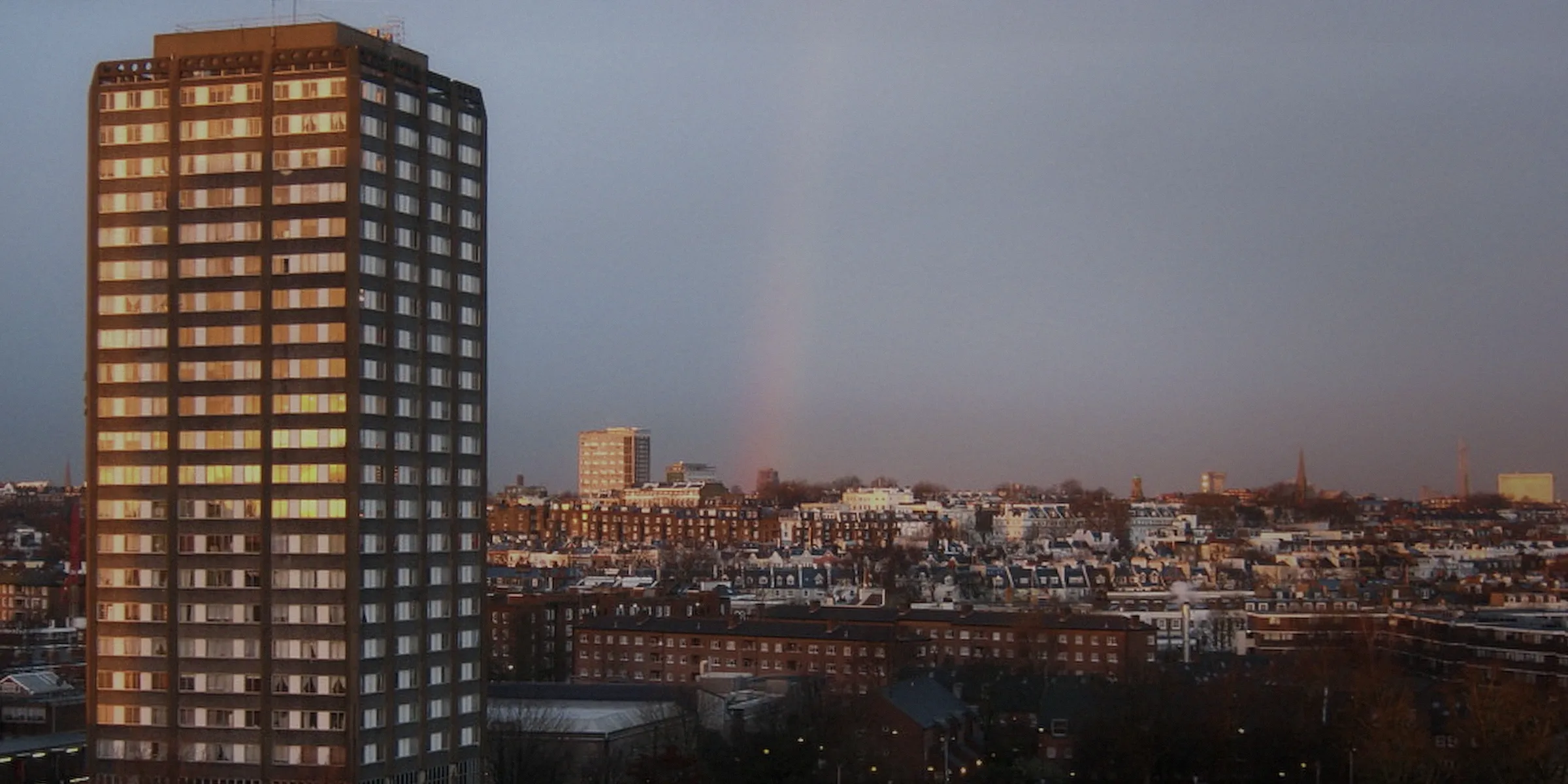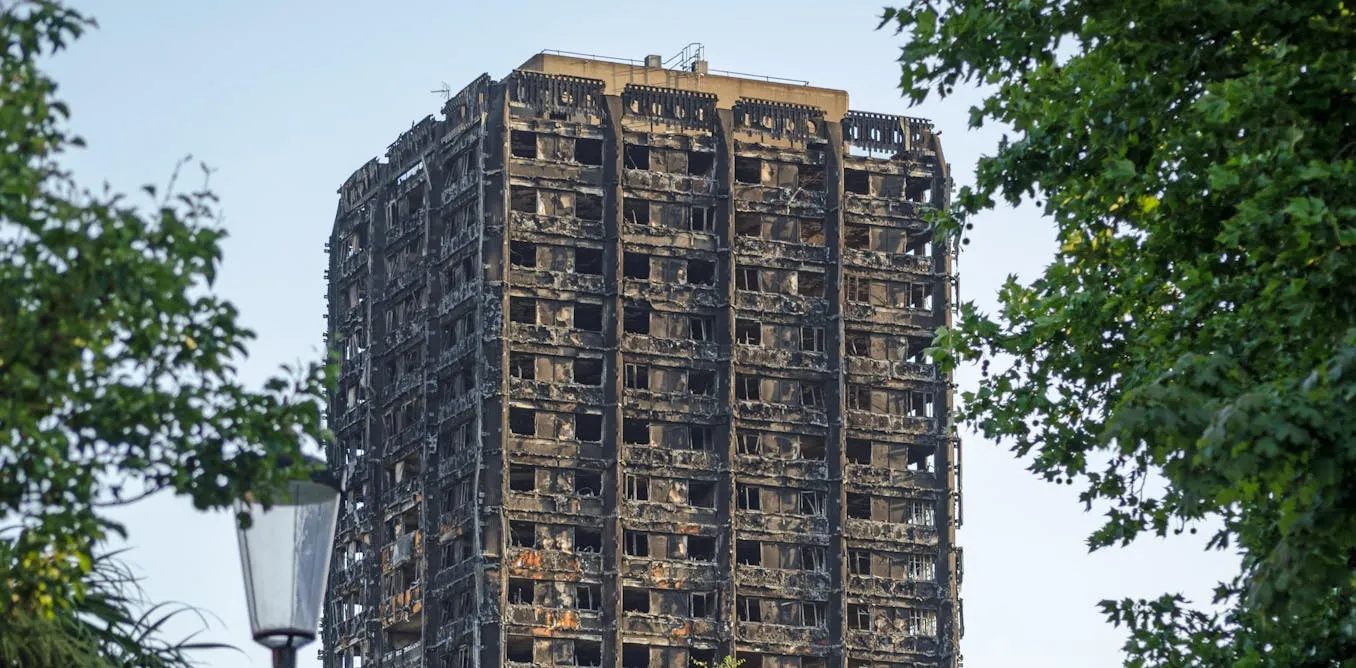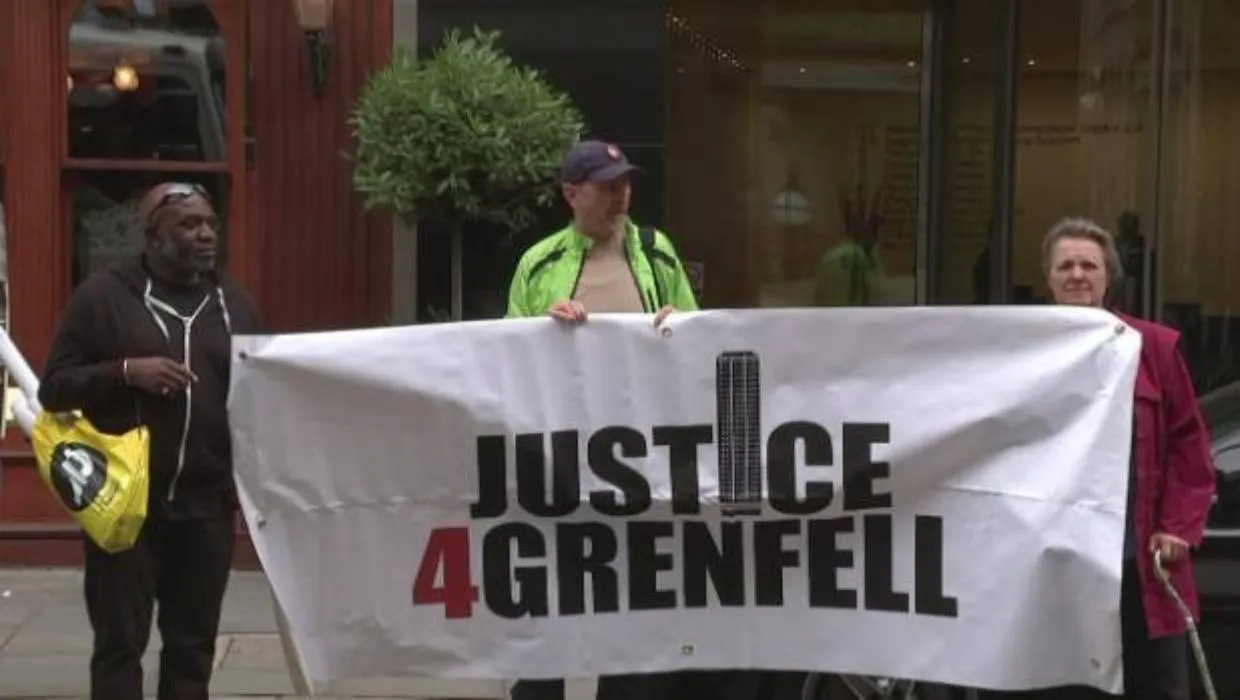Olaide Sadiq’s Grenfell: Uncovered revisits the 2017 fire that consumed a London tower block, an event that claimed 72 lives and seared itself into the British national consciousness. This is no simple memorial. It is a forensic and deeply human investigation, meticulously piecing together the chain of corporate avarice and political indifference that led to the inferno.
While the tragedy is rooted in the specific socio-political landscape of contemporary Britain, the film presents a narrative with chillingly universal undertones of systemic neglect. It stands as a harrowing and infuriating work, one that poses a devastating question about which lives a society values and which it deems disposable.
The Unbearable Weight of Witness
Where a lesser film might lean on experts, Grenfell: Uncovered builds its foundation on the unbearable weight of witness. The testimonies of survivors and victims’ families, such as the Gomes family, are not just anecdotal; they are the primary text of the tragedy.
Their calm, devastating recollections of the horror inside the smoke-filled flats provide an intimacy that no news report could replicate. In a media landscape often saturated with detached analysis, the film’s choice to center these voices is a powerful act of narrative centering. Their willingness to speak transforms them from passive victims into active chroniclers, a technique that allows their very specific London experience to resonate as a universal story of survival and loss.
This raw perspective is echoed by first responders like firefighter David Badillo, whose account articulates the professional trauma of being rendered helpless by a systemic failure far beyond his control. Director Olaide Sadiq masterfully intercuts these solemn recollections with the chaotic, flickering phone footage from the night itself.
The visual synergy is gut-wrenching: a dialogue between past trauma and present reflection that forces the viewer to confront the human reality behind the headlines. This dedication to the personal grounds the entire film. The final, quiet roll call of the 72 names is its ultimate narrative statement: a refusal to allow individuals to be subsumed by the abstraction of disaster. Their stories are not just evidence; they are the reason the entire inquiry matters.
The Architecture of Failure
Having established the human cost, the documentary shifts into a forensic mode, meticulously dismantling the architecture of the disaster. The film presents a lethal synergy of private greed, political dogma, and institutional inertia.
Its analysis begins with a decision rooted in a very British form of class-based aesthetics: cladding the tower to make a “poor cousin” building more palatable to its wealthy Kensington neighbors. The film exposes how this cosmetic goal led contractor Rydon to a fatal cost-saving exercise and a global manufacturer, Arconic, to supply materials they allegedly knew were dangerously flammable.
While the setting is specific, the narrative is chillingly universal—a case study in how globalized supply chains can introduce deadly risks into local communities, often with the paperwork to prove it.
This corporate calculus did not exist in a vacuum. Grenfell: Uncovered compellingly argues it was enabled by a specific political ideology, mapping the David Cameron government’s celebrated “bonfire of regulations.” The film reframes this policy, presenting it not as an abstract economic theory but as the systematic removal of critical safeguards that left citizens exposed.
The failure to act on the clear warnings from the 2009 Lakanal House fire ceases to be a simple oversight; it becomes a symptom of a systemic disregard, personified by the reported dismissiveness of civil servants like Brian Martin, who was in charge of building safety.
This cascade of culpability culminates in the tragic inadequacy of the London Fire Brigade’s “stay put” policy—a sound protocol for a sound building, but a death sentence for one wrapped in accelerant. Each layer of responsibility is presented not as an isolated mistake but as a tightly linked chain of causality.
The film creates a devastating portrait of systemic rot, where the desire to save a few thousand pounds and cut bureaucratic tape created a structure where disaster was not just possible, but inevitable.
The Grammar of Fury
The film’s overwhelming emotional force is matched by its formal discipline. Director Olaide Sadiq, honing a style from a background in emergency-service programs, employs a grammar of controlled fury to assemble the narrative.
The structure is a masterclass in narrative and mechanical synergy. It begins with a deceptively simple linear timeline, tracking the fire’s spread from the first 999 call. But this momentum is deliberately fractured.
Sadiq skillfully splices the visceral, moment-by-moment horror with the cold, archival evidence of the decisions that made it possible. This editing isn’t just stylistic; it is the film’s central argument, creating an agonizing dialectic between harrowing effect and historical cause.
Sadiq acts as a curator of modern tragedy’s artifacts: shaky phone footage, disembodied emergency calls, and clipped news reports. This mosaic of sources creates an immersive, almost unbearable present tense, a visual language universally understood in an era of citizen journalism.
While the details are British, the aesthetic of using raw, user-generated footage to authenticate a larger narrative has become a global standard for vérité documentary. Yet, the most searing moments are often the quietest.
The film’s most potent rhetorical device is to display the sterile, text-based denials from corporations on a silent screen, immediately followed by footage of the community’s dignified memorial walk. In this stark contrast, words are shown to be hollow, accountability is absent, and the silent procession of survivors becomes the most powerful indictment of all.
The Hollow Ritual of Accountability
In its final act, the film scrutinizes the aftermath, presenting the official inquiry not as a forum for truth but as a stage for a hollow ritual of accountability. The arrogant performance of former housing secretary Eric Pickles—who chillingly confuses the Grenfell death toll with the 96 lost at Hillsborough, another British tragedy defined by institutional failure—is presented as a masterclass in contempt.
Even the appearance of then-Prime Minister Theresa May, the sole politician to face the film’s camera, is framed as a carefully managed expression of regret within a broader architecture of inaction. These scenes function as a piece of political theater, a spectacle globally recognizable wherever power is asked to investigate itself.
The film uses these moments to illustrate a conclusion the survivors already know: justice remains elusive. The narrative exposes the “merry-go-round of buck-passing,” a bureaucratic dance familiar to citizens in any nation who have watched official inquiries diffuse blame until it vanishes completely.
The absence of criminal proceedings transforms the inquiry from a legal process into a painful, protracted deferral of justice, a performance that offers procedure in place of resolution. With the formal mechanisms having failed, the film locates moral authority elsewhere.
It returns to the quiet dignity of the survivors’ annual silent walks, a culturally specific and deeply poignant form of British protest. In the face of official evasion, their persistent, silent procession becomes the film’s final, lingering image: a community forced to hold a nation’s conscience when its institutions will not.
The Smoke Clears
Grenfell: Uncovered transcends the specifics of a single event to become a devastating portrait of 21st-century Britain. It exposes the country’s deep social fissures, posing a brutal question about which citizens are deemed worthy of protection and which are considered disposable—a question that resonates far beyond British borders.
The result is not a film that offers closure, but one that manufactures a profound and necessary fury. It is an essential, unforgettable piece of social-issue filmmaking that functions as an indictment, leaving the viewer to grapple with the embers of its argument long after the credits roll.
Grenfell: Uncovered is a powerful 100-minute investigative documentary that premiered worldwide on Netflix on June 20, 2025 .
Full Credits
Director: Olaide Sadiq
Producers and Executive Producers: Ahmed Peerbux, Anna Prichard, James Saville, James Rogan, Sandy Smith, Soleta Rogan
Cast: Survivors, witnesses, firefighters and expert contributors (featured on-screen; no traditional cast listing)
Director of Photography (Cinematographer): Harry Truman
Editors: Samuel R. Santana
Composer: Benjamin Kwasi Burrell
The Review
Grenfell: Uncovered
Grenfell: Uncovered is a masterful and essential piece of documentary filmmaking. It transforms the exhaustive data of a public inquiry into a heart-wrenching and infuriating human story. By expertly weaving together devastating personal testimonies with a forensic takedown of the corporate and political failures responsible, it creates a powerful, unforgettable indictment of systemic neglect. It is not an easy watch, but it is a necessary one, leaving viewers with a profound and resonant anger that demands attention and accountability.
PROS
- Gives a vital platform to the devastating, firsthand accounts of survivors and victims' families.
- Forensically details the chain of corporate, political, and regulatory failures.
- Skillfully contrasts archival footage, inquiry testimony, and personal interviews to build a powerful, cohesive argument.
- Elevates a specific tragedy into a universal story about class, neglect, and justice.
CONS
- The raw emotional content and distressing footage can be difficult to watch.
- For those who followed the inquiry closely, much of the information will be known, though its synthesis is new.


















































